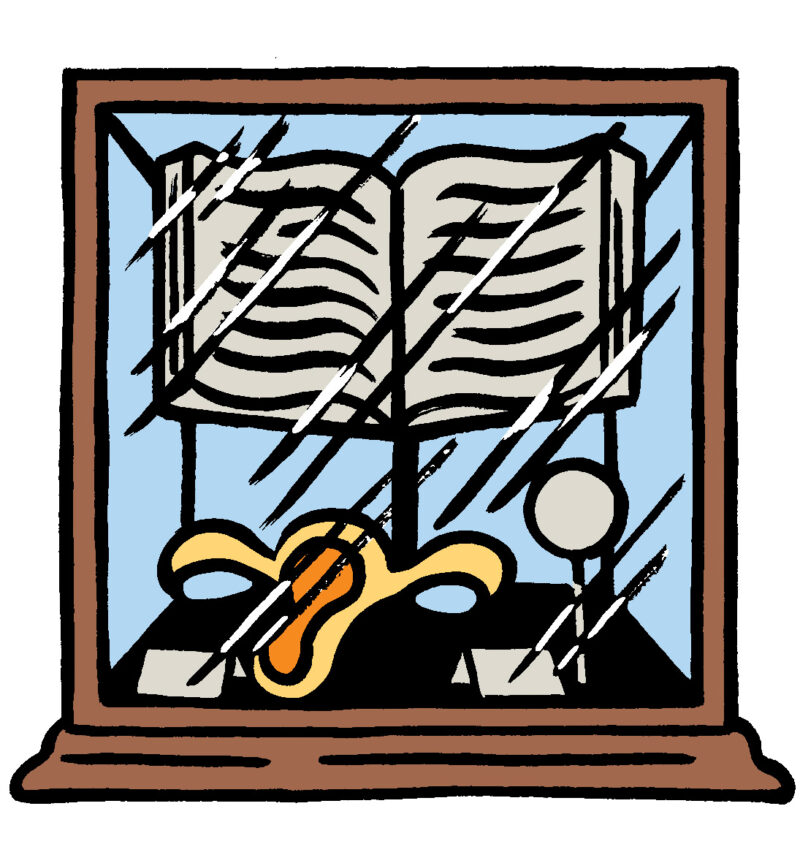It was in the eighteenth century that models of the uterus first became available to the general public in Europe. People had seized opportunities to view uteruses before, in Renaissance-era anatomy theaters, where crowds stood in concentric tiers around open female corpses. It wasn’t until the 1700s, however, when enterprising male anatomists manufactured wax models of the reproductive organ to be passed around, staged, and advertised. In other words, the uterus went on sale.
These objects, splayed open and dyed, were lopped off from any contextualizing sense of body or life; there was no way of knowing that some of them had been modeled on the anatomy of real women who had died during childbirth. In such anonymous shapes of tragedy lay the promise of exciting new knowledge. Three centuries later, it is unclear how much we have learned about the uterus or the catastrophes that regularly attend it.
Emma Bolden’s The Tiger and the Cage is a memoir about the author’s experience with endometriosis, a painful condition in which a person’s uterine lining grows outside the uterus. For Bolden, endometriosis has led to, among other complications, a pelvis fused with tissue, “large and hemorrhagic” cysts, and a fibroid “bulging” from the back of the uterus, bigger than the organ itself. Bolden underwent her third gynecological surgery in college, and by that time the cysts had her appendix surrounded. Because of their brown-bloodied look, her gynecologist called them “chocolate milk cysts.” It was too cutesy a term, but Bolden, a poet by training, is used to language’s clumsiness with bodily suffering. One of Bolden’s other gynecologists told her she had dysmenorrhea, a term that simply means “painful menstruation”: the symptom relabeled as diagnosis.
What do we do with pain? How do we communicate it to others without wasting ourselves on clichés, on botched metaphors, brute tautologies? Another doctor suggests to Bolden that her case is psychological: Was she perhaps molested as a child? His ineptitude inverts the premodern notion, equally cruel, that a woman’s mental illness stemmed from disturbances of the womb. Today, on average, endometriosis takes six to ten years to be correctly diagnosed.
Bolden is attuned to medical misogyny, and her memoir is interspersed with reimaginings of women who suffered similar ailments, or at least similarly caustic doctors. She is fascinated by Dr. Jean-Martin Charcot, whose female “hysterical” patients at Paris’s Salpêtrière Hospital were put on theatrical show in the nineteenth century: in such “pantomime scenes,” Charcot would claim to hypnotize sick women, making them “lift their skirts to their knees and point their toes, or else curtsy with a smile.”
Too often, the pursuit of medical knowledge makes the body an object of spectacle rather than care. Better doctors know that knowledge is a partnership, not a quest; they work to guide their patient toward greater self-discovery. William James—the nineteenth-century philosopher and brother to novelist Henry—once quipped that the ideal result would be “to eliminate the need of a physician” altogether. Yet in a time of privatized health care and Roe v. Wade’s dismantling, the inequality between gynecology and its patients feels larger than ever.
Henry and William had a younger sister: Alice James was, like Bolden, besieged by mysterious pain throughout her life. She was at one point diagnosed with hysteria and urged to see Dr. Charcot in France. It seems she never went, though she and her doctors continued to perplex one another, and the experience took its inevitable mental toll: “I went down to the deep sea,” she wrote of one summer spent in depression; decades later, Bolden would remark that her experience felt, at times, “like drowning.” The symmetry is startling. If language cannot yield precision, perhaps it grants something else: across the decades, a furtive and hard-earned fellowship.
Publisher: Soft Skull Press Page count: 368 Price: $17.95 Key quote: “This flesh is not my flesh, this self not under my control.” Shelve next to: Emily Ogden, Ann Patchett, Elaine Scarry, Laurel Thatcher Ulrich Unscientifically calculated reading time: Three afternoons spent indoors to escape a heat wave





